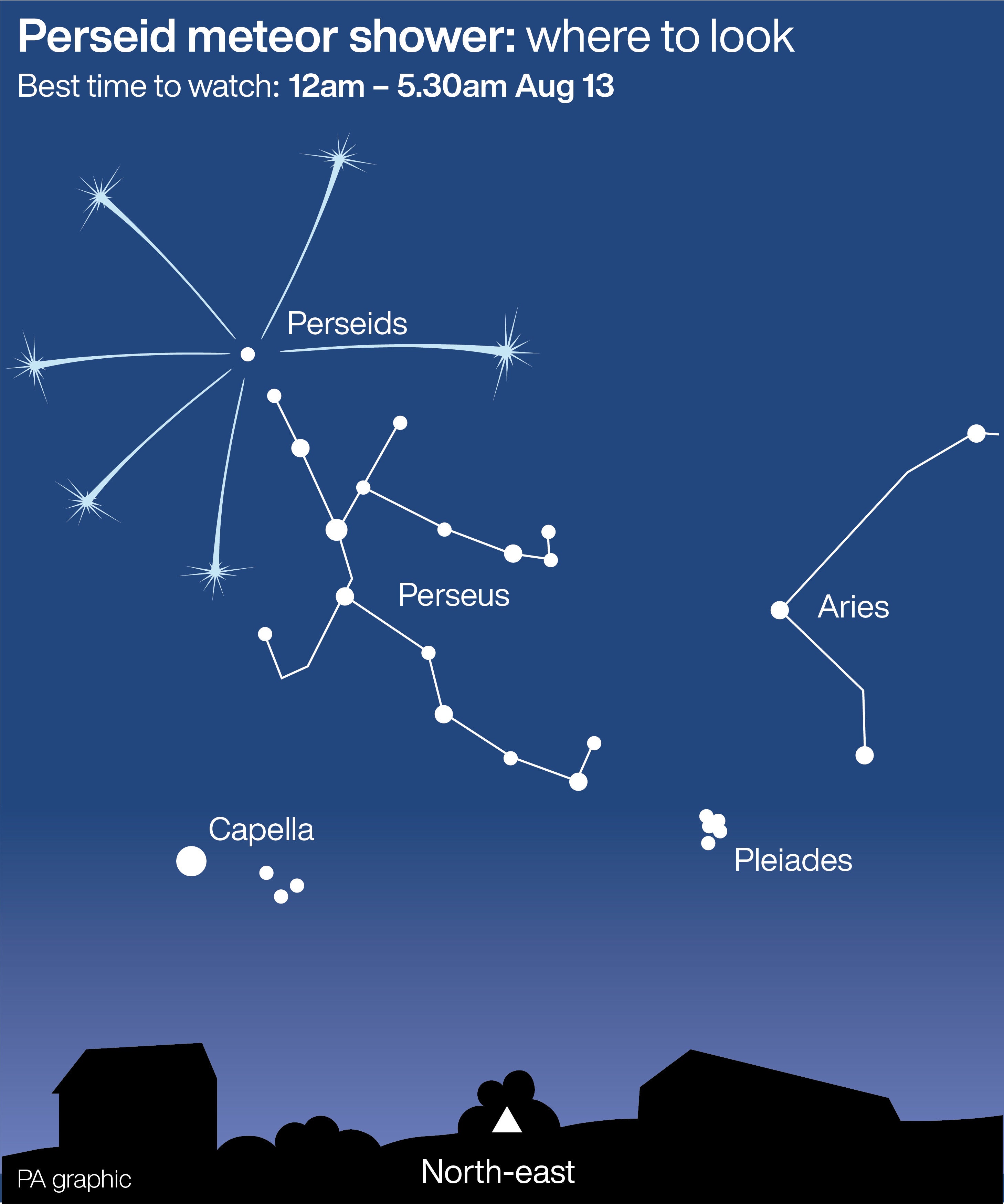How to watch the last night of the perseid meteor shower as it peaks
The display should be at its best and brightness from sunset on Monday into Tuesday

Your support helps us to tell the story
From reproductive rights to climate change to Big Tech, The Independent is on the ground when the story is developing. Whether it's investigating the financials of Elon Musk's pro-Trump PAC or producing our latest documentary, 'The A Word', which shines a light on the American women fighting for reproductive rights, we know how important it is to parse out the facts from the messaging.
At such a critical moment in US history, we need reporters on the ground. Your donation allows us to keep sending journalists to speak to both sides of the story.
The Independent is trusted by Americans across the entire political spectrum. And unlike many other quality news outlets, we choose not to lock Americans out of our reporting and analysis with paywalls. We believe quality journalism should be available to everyone, paid for by those who can afford it.
Your support makes all the difference.The world will get its last chance to see the peak of the Perseids meteor shower tonight, as the celestial show begins at sunset.
Stargazers could see as many as 100 meteors an hour, in what is considered the best shower of the year.
It happens as Earth passes through a cloud of dust from comets. That dust collides with the atmosphere, lights up, and leaves a trail that can be watches through the sky.
The shower should be visible around sunset on Monday until the early hours of Tuesday, but the best time will be from midnight.

The event is associated with the dusty debris left by Comet Swift-Tuttle, which orbits the sun once every 133 years.
The meteoroids from the comet, mostly no bigger than a grain of sand, burn up as they hit the Earth’s atmosphere at 36 miles per second, to produce a shooting stream of light in the sky.
Jess Lee, astronomy education officer at the Royal Observatory Greenwich, said: “This shower is known for a particularly high rate of meteors (up to 100 per hour if we’re lucky) and particularly bright meteors.
“This year, due to the current phase of the Moon, the sky should be dark enough for many of the shooting stars to be visible.”
She added that the best view of the shower would be in areas that had clear skies and that were away from light pollution.
Ms Lee said: “If you do want to spot some meteors, try to go out after midnight, as far from any streetlights as you can, to an area with lots of the sky visible if possible.
“It’s then just a case of getting comfortable, looking up, and waiting.”
The Perseids are named after the constellation of Perseus, because if you trace the meteors back across the sky they appear to have come from that area.
Additional reporting by agencies